Difference Between Deodorants and PerfumesDeodorant and perfume provide the message that the user has a pleasant scent and excellent body odor. Although these two terms have scent-oriented essences, their compositions and intended uses are distinct. From its use to its composition to the labels given to scents, perfume has a more upscale feel about it. Perfume is typically the more costly item. On the other hand, deodorant is intended to cover up offensive body scents and has significant clinical benefits. What Are Deodorants?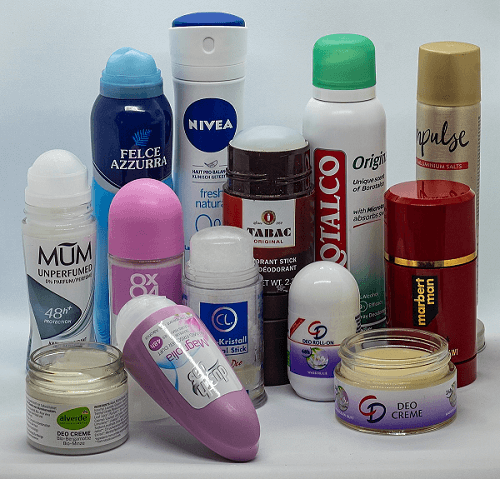
Deodorants, sometimes known as "deos," are fragrant body sprays that are used to cover up body odour. While the majority of individuals use deodorant to reduce underarm odour, others may view it as a sign of good grooming. As a result, certain excellent deodorants for men and women differ in how they smell, with the perfumes geared toward women being "louder" than those for males. Good manners include having a pleasant scent. A high-quality Deo spray has various benefits, in addition to leaving your skin with a distinctive aroma. Additionally, it shields you from unpleasant body odour and boosts your mood all day. Dermatologists and psychologists suggest utilizing these scents for a variety of reasons, including improving hygiene and maintaining confidence. Kinds of Deodorants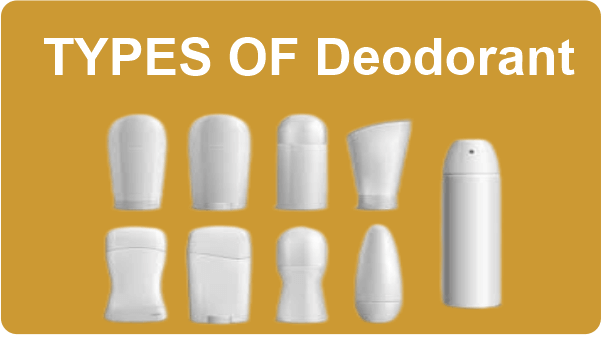
There are many types of deodorants. These include;
What is A Perfume?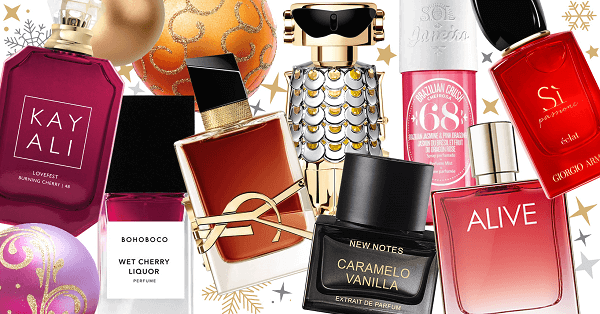
The term "perfume" refers to a mixture of fixatives, solvents, and scented essential oils or aroma compounds (fragrances), typically in liquid form, that is used to impart a pleasant scent to the human body, animals, food, objects, and interior spaces. "Right from the earliest days of modern chemistry up to the present day, fragrances have greatly contributed to the evolution of organic chemistry as respects methodology, systematic categorization, and theory," Leopold Ruika, the 1939 Chemistry Nobel Laureate, said in 1945. According to historical records and archaeological findings, the use of smells may be traced back to some of the earliest human civilizations. The industrial synthesis of scent molecules like vanillin or coumarin in the late 19th century allowed for the creation of perfumes with previously unattainable fragrances from natural aromatics. Modern perfumery officially started with this. Different Types of Perfumes
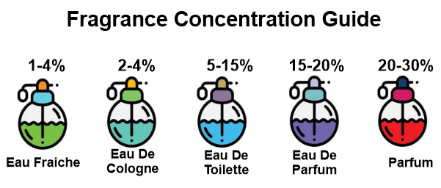
1. Perfumes or Parfum
2. Eau de perfume or Eau de parfum
3. Eau de Toilette
4. Eau de cologne
5. Eau Fraiche
6. Perfume Oils
Difference between Deodorants and Perfumes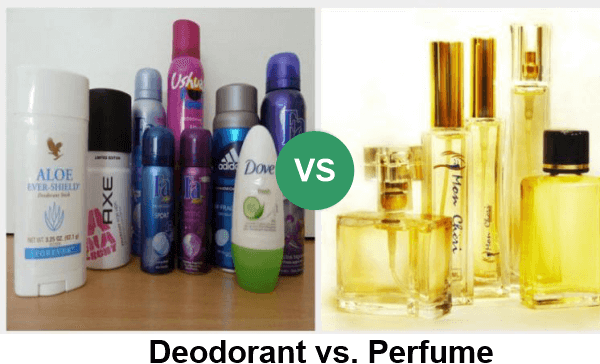
1. Function of Deodorant Vs. Perfume Deodorant is solely applied to the body to cover unpleasant body scents from sweating and microorganisms. In addition to being applied to the body and clothing, perfume creates pleasing odours that appeal to the wearer. Deodorant is intended to prevent stinking, and perfume is meant to provide fresh scents for enjoyment. 2. Composition in Deodorant and Perfume Deodorant has a small number of essential oils or scents and chemicals that fight the microorganisms in perspiration. Aromatic essential oils are combined with an alcohol base to make perfume. Depending on the kind of scent being produced, the oils' strength rises. Deodorants are offered in spray, roll-on, and stick applicators, whereas perfumes are sold in spray mists and perfume bottles. 3. Degrees of Intensity Due to the components utilized to make perfume, it has a stronger aroma. The more potent fragrances are more expensive, but they remain longer on the body. Although deodorants contain some odour, their smell strength is less than that of perfumes due to their purpose and chemical additions. 4. Cosmetic Value in Deodorant and Perfume Both items are useful cosmetically. Although they serve distinct purposes, a deodorant is frequently bought because of its functionality. On the other hand, high-end perfume brands can be viewed more as luxury cosmetics. 5. Costs and Presentation of Deodorant Vs. Perfume The cost and quantity of deodorants that are effective for daily cosmetic usage are often similar. As a result of the difference in the number of essential oils, deodorant costs less than deodorant. The essential oil content and perfume formulation may have an impact on the cost of the scent. The quantity and kind of packaging for perfume might vary. Designer bottles and pricey marketing techniques are used to promote branded fragrances. Deodorant vs Perfume: Comparison Chart
ConclusionWhile perfumes produce a nice smell all day, deodorants work by eliminating germs on the skin to remove odour. Contrary to many types of perfume, deodorant smells contain relatively little oil and won't mistakenly stain clothing. Both deodorants and perfumes are available in a variety of enticing varieties for both men and women.
Next TopicDifference between
|
 For Videos Join Our Youtube Channel: Join Now
For Videos Join Our Youtube Channel: Join Now
Feedback
- Send your Feedback to [email protected]
Help Others, Please Share










